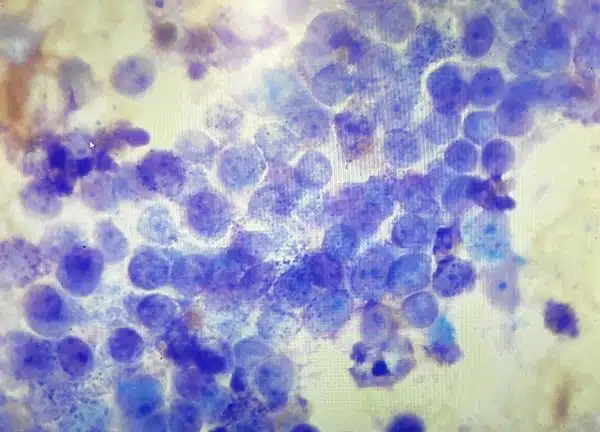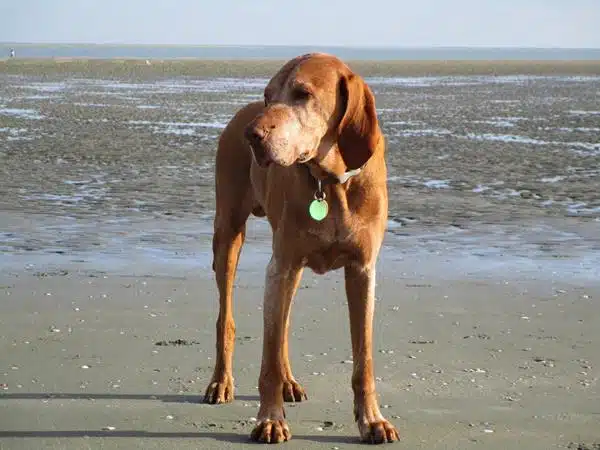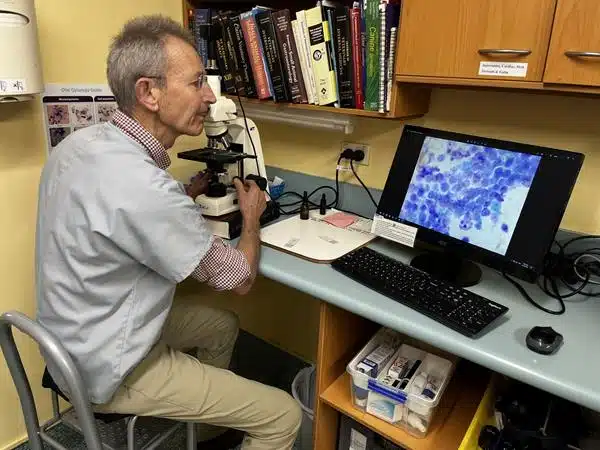
“Dad, Bartok has got a big lump on his neck”.
Bartok was our 9 month old Viszla puppy. Viszlas have very short coats and I was handling him all the time. No way he had a big lump that I hadn’t seen!
“Don’t be silly, Thomas”
“He has! It’s as big as the end of my thumb”.
And indeed he had. It was about 1.5cm in diameter and had an oozy surface. It didn’t really look like a cancer. I took him with me into Halifax, collected a sample of cells from inside the lump by inserting a very fine needle, spread the cells on a microscope slide and coloured them with special cell dyes. Viewed through the microscope the diagnosis was clear. This was a mast cell tumour and by its rapid growth likely a very malignant one. That was confirmed by the pathologist after surgery. Fortunately the mass was high on the left side of Bartok’s neck so the tumour could be removed with wide margins around and below it. Bartok had plenty of spare skin for closing the saucer sized hole and he lived a long and happy life.
Yes, our pets get cancer too and because they have a shorter lifespan cancer can appear much more quickly than you expect in your dog or cat. Please take 4 minutes to remind yourself of these 10 key signs of cancer in your pet.
If your dog or cat is showing any of these signs book a visit with us and we will check it out. With cancer early detection gives your pet the best chance for a successful outcome. Grandma was right when she said “A stitch in time saves nine!”

We insert a very fine needle into the lump to collect a sample of cells. We put this on a glass slide, colour the cells with special dyes and examine the slide under the microscope at high power. Most of the time we can identify right away just what the lump is. If it is malignant – a cancer that will grow or spread quickly – we will discuss the best course of action with you. More than 50% of malignant skin and subcutaneous (under the skin) cancers can be cured by surgery. Early detection boosts that percentage.

If you find a lump on your pet or one of the 10 signs of cancer take action! Grandma also said “What you don’t know can’t hurt you” but when it comes to cancer she was wrong!
Our aim is to keep your pet happy and healthy for as long as possible. Use this Daffodil Day as a reminder to be vigilant about cancer in your pet.
Warm regards
Hans Andersen and the Halifax team



Recent Comments